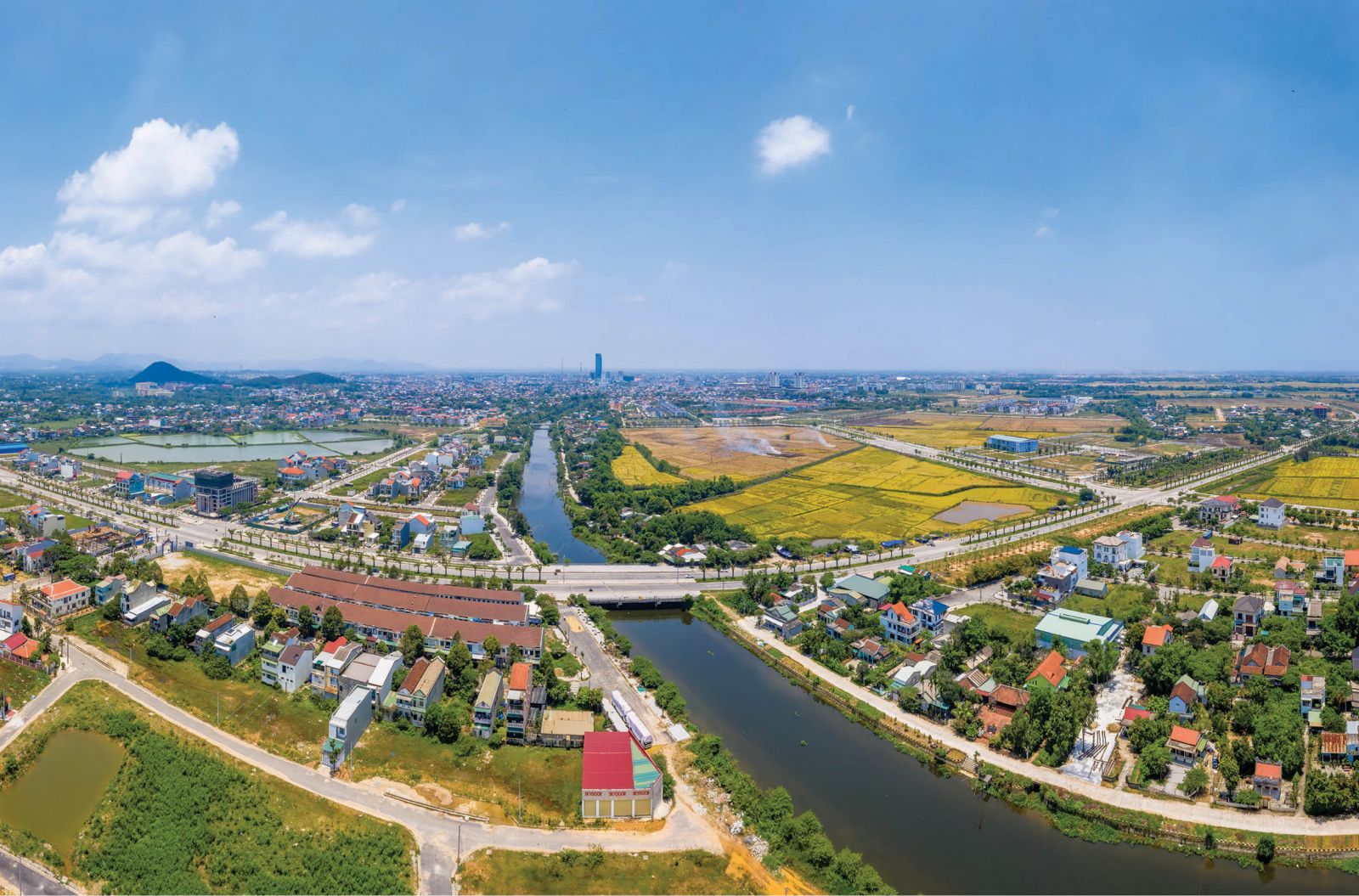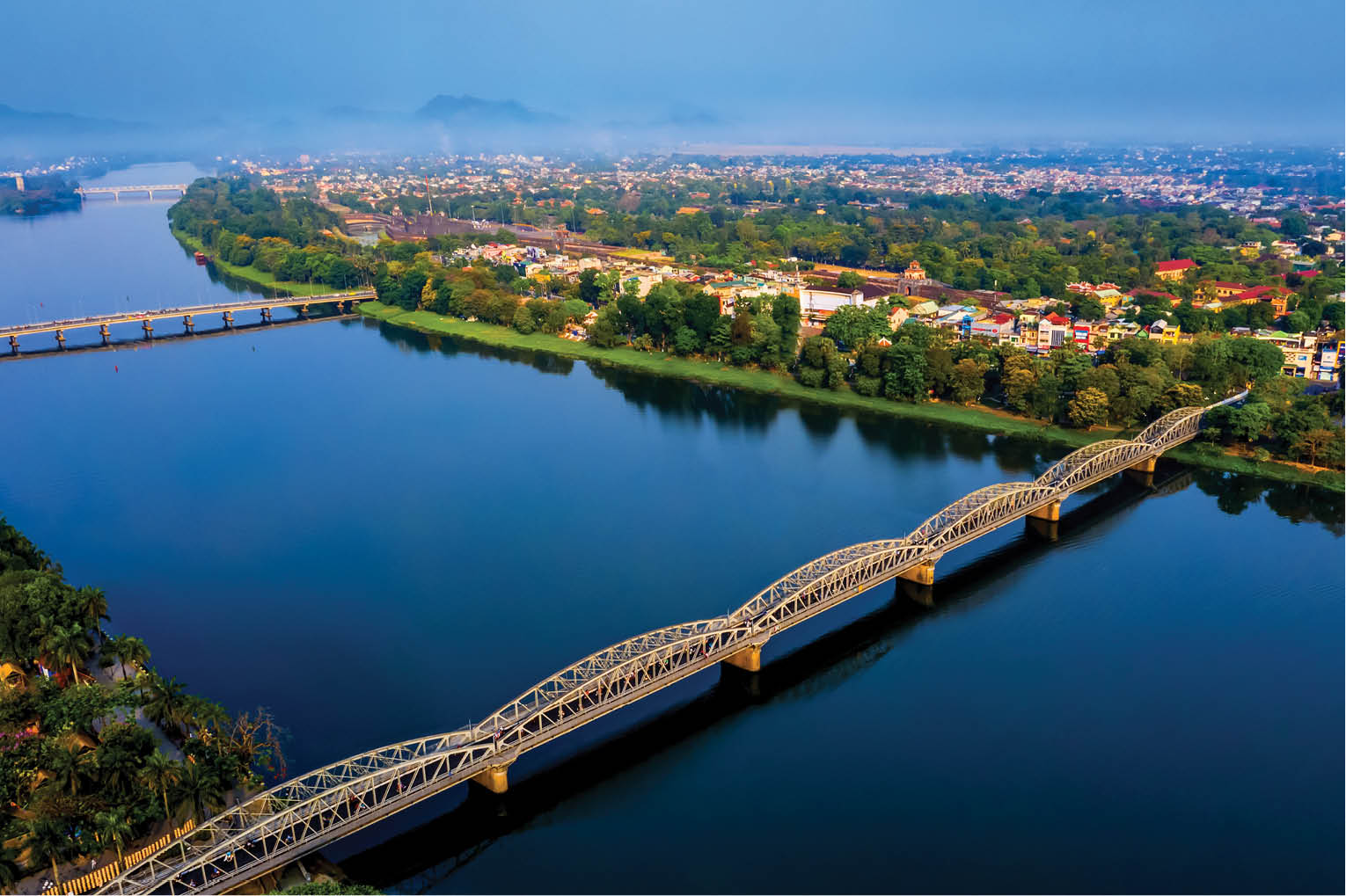.jpg)
Chairman of Hue City People's Committee, Mr. Vo Le Nhat. Photo by Thai Hung
First of all, congratulations on your new position! As the Chairman of Hue City People's Committee, could you please share some of your thoughts and your future plans?
I myself took on the mission at a very important time when the city was adjusted for expansion under Resolution 1264 dated April 27th, 2021 of the National Assembly Standing Committee. This is an honor for me, but at the same time, a heavy responsibility before the Party Committee, Government and People of Hue City.
In 2021, Hue City continues to strive for the “dual” goal of preventing and controlling the COVID-19 pandemic, as well as ensuring social security and economic development. Under the direction of the Central Government and the Province, public investment projects promoting economic growth are drastically and effectively implemented, which is a prerequisite for the development of the central dynamic municipality.
In the near future, the city will continue to focus on implementing key programs and projects to ensure synchronization of critical infrastructures among areas of the city, heading towards being the central dynamic municipality, the administrative center, with knowledge and technology being the driving force for economic growth.

Hue City will prioritize investment in critical infrastructure. Photo: Nguyen Phong
The expansion of Hue City’s area from 70.67km2 to 265.99km2 is a great opportunity to contribute to the preservation of heritage values and socio-economic development. With this expansion, what are the opportunities and difficulties for Hue, sir?
The land area being expanded by 3.7 times and the population being nearly doubled accounting for half of the province's population, have created many development opportunities for Hue City. The mineral resources, geographical characteristics, population and heritage values are also creating favorable conditions for socio-economic development.
Therefore, the expansion is an opportunity for Hue to continue to perform well the tasks assigned by the Central Government and the Province, especially the conservation and promotion of cultural heritage values; at the same time creating a driving force to promote socio-economic development with the geographical diversity of mountains, sea and lagoon. This is a huge advantage.
In addition to the development opportunities, Hue City is also facing certain challenges after the expansion. Maintaining that same "machinery", the city has to perform the task of managing and serving the population of more than 652,000 people, with an area of nearly 266km2. While much of the city's machinery is designed to manage the old city, this expansion brings with it many unprecedented features.
A typical example is how to develop the economy of the lagoon, the sea, and the agricultural sector which were previously not the city's strengths. The prevention and control of natural disasters, storms and floods in 13 newly merged areas is also a big problem. Another challenge is how to maximize the potential fiscal space, while ensuring stability and harmony, preserving and promoting heritage values, preserving the province's unique culture, as well as forming a "model" city.
The requirements include how to improve the people's material and spiritual life, how to ensure social security, and how to invest in infrastructure with the diversity of urban and rural areas, in the conditions of properly performing the prevention of COVID-19 pandemic.
What are the problems that the city needs to focus on solving in the immediate future, sir?
In the immediate future, the city will focus on stabilizing the population, especially the communes and wards that have just been joined into the city. This requires effectively implementing the city's key programs and projects, such as the relocation project of area I of Hue Citadel or the projects on urban embellishment, prioritizing resources to invest in embellishment and stabilizing the city’s machinery, which will create smoothness in the wards that have just been merged.

Hue City will focus on investing in critical infrastructure. Photo: Dang Tuyen
At the moment, the central sector has a rapid urbanization rate, but its surrounding areas have inadequate urban infrastructure. Therefore, it is necessary to pay attention to the critical infrastructure system. The city has set up working groups to assess this issue so that guide for investment can be provided within this year and the following years in order to create the synchronization of infrastructures between old and new areas of the city, .
Investment and urbanization also need a suitable model and roadmap which ensure harmonious development between rural and urban areas, between conservation and development, between the old and the new, etc. All these problems show that urban development requires careful consideration, ensuring the development orientation of Thua Thien Hue as a heritage municipality in the future.
Could you please outline the socio-economic status of the expanded city?
The expansion of Hue City is just the beginning of a new phase of development. Currently, the city not only is a plain with the Perfume River as the center, but will become a municipality with the geographical diversity of sea, lagoon and mountain, allowing it exploit many strengths. There will be many changes in the economic scale and structure, industry development, socio-economic development orientations, goals and targets.
Hue is transforming strongly, however, the city has always adhered to the goal of sustainable socio-economic development in parallel with environmental and landscape protection, maintaining a “green - clean - bright” Hue City. Many programs, projects, and strategies that were and have been implemented will create the appearance of Hue municipality, which develops in all aspects, thrives and gradually becomes greener and more beautiful, as well as associated with the long-term interests of the People.
Thank you for attending this interview!
By Thanh Huong